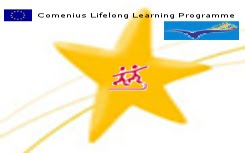
Foreign language learning in Greece dates back to the second half of the 20th century and has been linked to the absolute need for international communication, which gave vital commercial and political character to foreign language teaching. Greek students start learning a foreign language at a very early age and they do reach a high level of competency. This is due to the fact that Greek parents insist on their kids completing their foreign language study before finishing Senior High school.
HISTORICAL BACKGROUNDThe first foreign language established and taught in secondary education at Greek schools was French.
Between
1950 and
1960 the essential teaching of foreign languages began.
In
1961 English was included in the curricula of Junior High schools nation-wide.
In
1987 English started in the last two grades of Primary schools, whereas Non-Conventional Schools were allowed to teach 2 or 3 foreign languages in Primary education.
In
1989 English was introduced in the 4th, 5th and 6th grade (that is, in the last three grades) of Primary schools.
In
1993 German was introduced as a compulsory second language option- along with French- in Junior High schools. Up to then German was taught only in Non- Conventional schools.
In
1996 the “Comprehensive 6- year Curriculum” for the teaching of English as a foreign language was published and English teaching from the 4th grade of Primary schools to the 3rd grade of Junior High schools became compulsory.
In
1996-1997 with the introduction of German in Upper Secondary education, the teaching of two or three foreign languages was established in both Junior and Senior High schools.
In
1998-1999 a foreign language chosen among the three on offer (English, French and German) became a compulsory option in the curriculum of Senior High schools.
In
2003 English started to be compulsorily taught in the 3rd grade in Primary schools.
In
2005-06 pilot teaching of French and German was introduced in the 5th and 6th grade of Primary schools.
In
2006-07 teaching French or German in the 5th grade of Primary schools with six and more teachers became obligatory.
In
2007-08 the teaching of these two languages was extended to the 6th grade in Primary schools followed by the necessary changes in the curriculum.

Work done by the team of the 1st Lyceum of Karditsa ,Greece.




























 The history of teaching in Greece might reasonably be called the history of teaching in the Western world, so profound was its influence. Much of modern education is based on the traditions and disciplines established by the early Greek teachers.
The history of teaching in Greece might reasonably be called the history of teaching in the Western world, so profound was its influence. Much of modern education is based on the traditions and disciplines established by the early Greek teachers.
 Education was an important part of life for wealthy children in ancient Greece. Though school was a privilege of the upper class, almost all children of leading families began their education around the time of their seventh birthdays.
Education was an important part of life for wealthy children in ancient Greece. Though school was a privilege of the upper class, almost all children of leading families began their education around the time of their seventh birthdays.
 For their lessons the students used a wax-covered board with a stylus to carve out letters in the wax. When completed, the wax was smoothed over again and reused. The subjects taught were reading, writing, basic math, music and physical training.
For their lessons the students used a wax-covered board with a stylus to carve out letters in the wax. When completed, the wax was smoothed over again and reused. The subjects taught were reading, writing, basic math, music and physical training.
